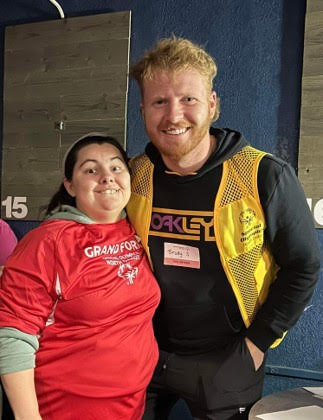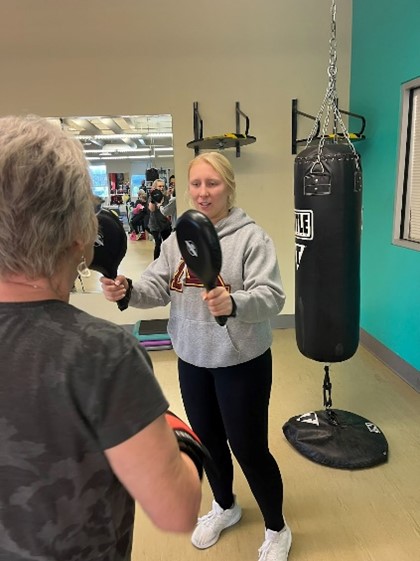

University of Minnesota Crookston senior students in the exercise science and wellness program participated in a special populations experiential learning project fall semester, and left with a better understanding of being active in various stages of life. Assistant Professor Anita Gust, Ph.D. says the goal was for her students to learn the uniqueness of the population as well as how community programs work to promote and use exercise to support the needs of that population. The special populations consisted of children, older adults, persons with mental and/or physical challenges, and those with chronic health conditions.
Students engaged with local and regional communities, and connected with programs such as the Grand Forks, N.D. YMCA’s Itty Bitty soccer and basketball for children; YMED Fit, a personal training program targeting a variety of health conditions; and YogaFlex for older adults. They also engaged with cardiac and pulmonary rehab at RiverView Health, Special Olympics in Fargo, N.D., and Adapted PE with the East Grand Forks, Minn. school system for those with mental and/or physical challenges. Four of Gust’s students, including Brody Sorenson, Payton Kleinhuizen, Blake Gulden, and Tyler Zahradka, volunteered at the Special Olympics State Bowling Tournament. Another student, Kora Norland, worked one-on-one with participants in the Rock Steady Boxing Parkinson’s Program through the YMCA.
Student’s written reflections about the project included lessons learned and why it mattered to them. Quotes in the submitted reflections included:

- “I learned more about different conditions and although this was informational, I enjoyed the experience; the biggest takeaway was to always be kind and to always be an ear to someone.”
- “This learning matters to me because it helped me connect what I have learned in this class specifically, previous classes, and work experience with a real life experience. It also teaches me that this isn’t just therapy to the clients or the therapists who oversee their treatment. This is forming a relationship with each other and learning things about their personal lives, the social aspect and communication portion.”
- “Throughout this experience, I was able to learn so much more about exercise and how it can help patients with disabilities and patients who are just getting older and want to be able to move around better.”
Gust says what she felt the students gained most from the experience was the ability to view the people they worked with as individuals with a name and a personal life, and not just someone with a disease or disorder.
“They learned valuable communications skills and gained a sense of compassion for others who may be unlike themselves or their family members,” she added.


